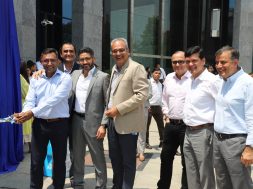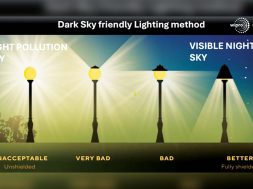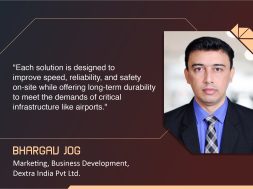TWIN comes equipped with intelligent traffic control for traffic optimization

This state-of-the-art TWIN system by nature is more efficient because of independent operation of the cars and by parking cars that are not in use, says Manish Mehan, CEO & MD, TK Elevator (India).
The TWIN elevator system is more common in Europe, what kind of acceptance has it garnered in India so far? How does it aid in reducing energy consumption?
TWIN has been widely accepted and liked as an ideal mobility solution for high-rise buildings across the globe. Having said that more than 400 TWINs have been installed worldwide. In India too, we have received encouraging reviews from the potential customers.
TWIN, our innovative elevator system, comes equipped with intelligent traffic control for traffic optimization. This state-of-the-art system has two cabs running independently in the same shaft, each with its counterweight, safety and drive equipment. It is by nature more efficient because of the independent operation of the cars and by parking cars that are not in use. With reduced shaft core space and construction costs, the TWIN elevator system offers the most flexible elevator solution.
Especially for super high-rises, what are the trending technologies to ensure maximum elevator speeds without compromising on safety and comfort?
Projects with super high-rises are typically complexes consisting of multiple types of buildings, including offices, mixed-use, hotels, shopping malls and others. The emerging trend for this kind of establishments would be a system that caters to all the individual needs of these buildings, yet offers the same level of efficiency and safety.
Our MULTI elevator system, like our TWIN, can accommodate more than one elevator car in the same shaft, In addition to that, elevator cars are driven by rope-less linear motors ensuring comfort and the ability to travel both vertically and horizontally to ensure efficiency. These advantages allow the MULTI to be used as shuttles in multi-purpose complexes, offering the benefits of shorter travel time and larger capacity.
What kind of emergency evacuation systems need to be in place to ensure that an elevator can be used in the case of an emergency evacuation?
The best example in this regard would be the advance Occupant Evacuation Operation (OEO) enabled elevators, which have been designed and installed by thyssenkrupp in One World Trade Center in New York City. In contrast to conventional elevators, OEO elevators can operate during an emergency, facilitating a faster and more efficient evacuation by combining the use of stairwells and elevators and better accommodating those whose mobility is restricted. OEO elevators are built with safeguards that protect against water, heat and smoke from getting into the elevator lobby or hoistway. In the event of a power outage, these elevators can run on backup power.
Especially for heritage buildings, what kind of elevators should be used so that they espouse and reflect its design sensibilities?
thyssenkrupp Elevator offers a full suite of elevator and escalator modernization solutions that can be tailored for heritage and older buildings. Without altering the design and structure of these buildings, our MOD solutions can give existing hardware in heritage buildings a complete overhaul. By replacing existing electrical, signalization and door components, as well as new traction machines, elevators in heritage buildings can be given a new life with enhanced performance, speed and capacity.
Cookie Consent
We use cookies to personalize your experience. By continuing to visit this website you agree to our Terms & Conditions, Privacy Policy and Cookie Policy.









